

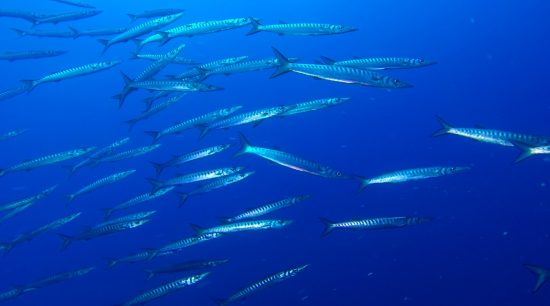
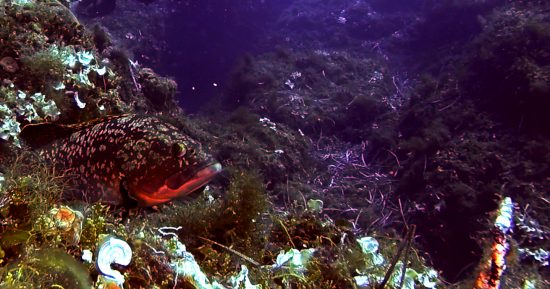
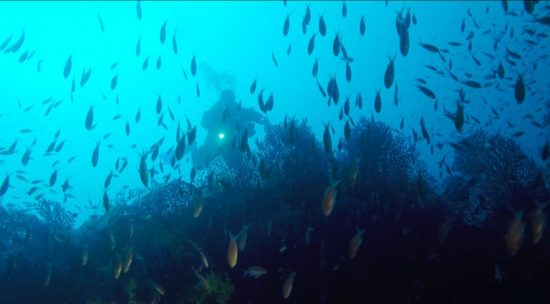
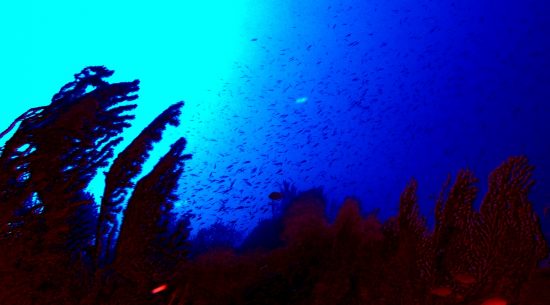
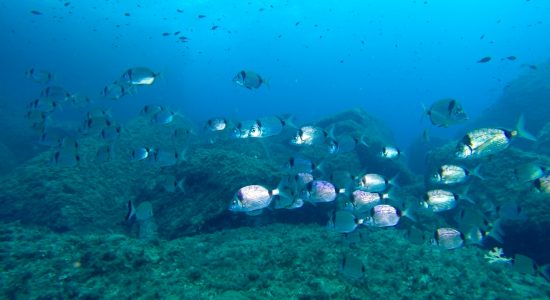
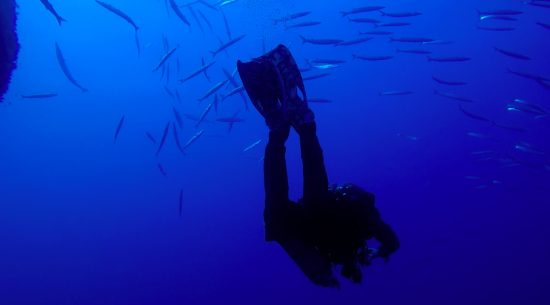
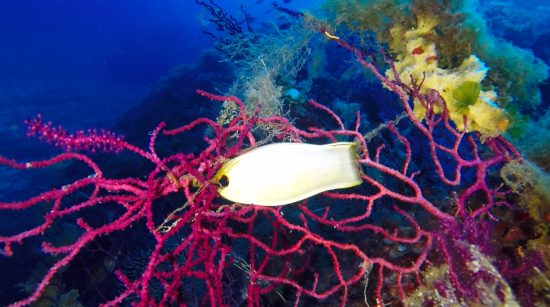
Legend has it that when Venus emerged from the sea, seven pearls fell from her necklace creating seven islands off the coast of Tuscany, one of which is the island of Pianosa.
This triangular rock, situated around 13km south-west of the island of Elba, looks almost completely flat, without particular ruggedness or hills, in sync with the origins of its name ‘Planasia’ from the Latin ‘planus’ or ‘flat’.
Pianosa has been inhabited since prehistoric times, as documented in archaeological findings which even date back to the Bronze Age, and in Roman times the island was used as a place of deportation. Agrippa Postumo, the nephew and ex-heir of Augusto, was exiled there, and the ruins of his villa and a system of catacombs are testament to this. In this period, Pianosa was also an important centre for commercial routes in the Mediterranean, and underwater archaeological expeditions have discovered and studied submerged deposits of Hispanic and African oil urns.
In Medieval times, after a violent dispute between Genoa and Pisa, the island passed under Piombino dominion to then become uninhabited and used, during the summer, by farmers and fishermen from Elba.
Deportations to Pianosa started once again during the second half of the 19th century with the creation of an agricultural penal colony, in which the future President of the Republic, Sandro Pertini, was also detained.
True isolation started in 1977, with the establishment of a maximum security prison and the forced evacuation of Pianosa’s population. This new reality transformed it in to a real fortress, inaccessible to all and guarded day and night both on land and sea. In those years, criminals such as Mafioso Francis Tusatello and member of the Red Brigades, Renato Curcio, were imprisoned there.
Only in 2011, after the system of defence had been relaxed for some years, did the prison close. From that date, the ban on disembarking on the island ended, which on the one hand had avoided touristic development, and on the other preserved the beauties both on the surface and underwater, and so Pianosa, the flat island, once a hell for mafia members hit by Article 41-bis, today has a future linked to the environment and ecology.
I arrive by dinghy, leaving from Portoferraio one Friday in mid-September. The sky is clear but the sun doesn’t allow us the just warmth. After the boiling summer the temperatures dropped drastically and even here, in the Tuscan archipelago, the climate is autumnal.
The submerged treasures of Pianosa, uncontaminated for over 150 years, are wild, and offer divers excitement and surprises thankso the rich sea life which, not being used to the presence of divers, allows itself to be easily approached.
To preserve and protect the environment, the Arcipelago Toscano National Park authority has allowed regulated and controlled diving with 7 designated mooring buoys. 4 of these are dedicated to scuba tourism, and divers must be accompanied by authorized and certified dive centres that coordinate outings with one another. Dives are carried out by an environmental dive guide authorized by the Region of Tuscany. It is important to know that to dive in Pianosa it is necessary to have advanced or second level dive certification.
Diving at buoy 3
We dive down to a large rock formation, characterised by steps and terraces which descend down to a sandy seabed at 40m deep. The rocks and crevices are covered with hard yellow corals whilst flat areas are covered with Neptune grass.
The current is very strong and it is often necessary to find shelter between the rocks to admire calmly the wonderful, majestic groupers, which aren’t at all scared and await us curiously, wanting our attention.
Above us hundreds of huge barracuda swim in a circle, reflecting the rays of the shy September sun on their scales, whilst an eagle ray passes by, surveying the area with a regal air.
Diving at buoy 5
We descend down to this rock formation, which has a conformation similar to that of buoy 3, but decide not to visit its maximum depth of 42 meters and to go into 2 wonderful grottos instead. They are difficult to distinguish from the outside and open into large rooms covered in yellow cluster anemone.
Here the current is also demanding, allowing us to see scenes which are typical of wild, uncontaminated stretches of water.
Common dentex on the hunt swim heavily, circling a moray eel that wedges itself in the narrow opening of a rock for defence. Groupers peek out of crevices, allowing us to get close to them then disappear back into their shelters. Hundreds of barracuda dance in the blue to a slow rhythm, almost awaiting the divers which near, trying to become part of this magical, marvellous world.
Here greater amberjacks are abundant. Some pass like lightning bolts, tearing through the cloud of damselfish before our eyes. Whilst I am in decompression, one of them passes by slowly and majestically, allowing me to observe it in all its sinuous beauty.
Taken from the original article, published in Italian here.
 Underwater Tales by Stefano Sibona
Underwater Tales by Stefano Sibona 14th May 2019
14th May 2019 Isola di Pianosa, Campo nell'Elba, 57034 Campo nell'Elba LI, Italy
Isola di Pianosa, Campo nell'Elba, 57034 Campo nell'Elba LI, Italy 